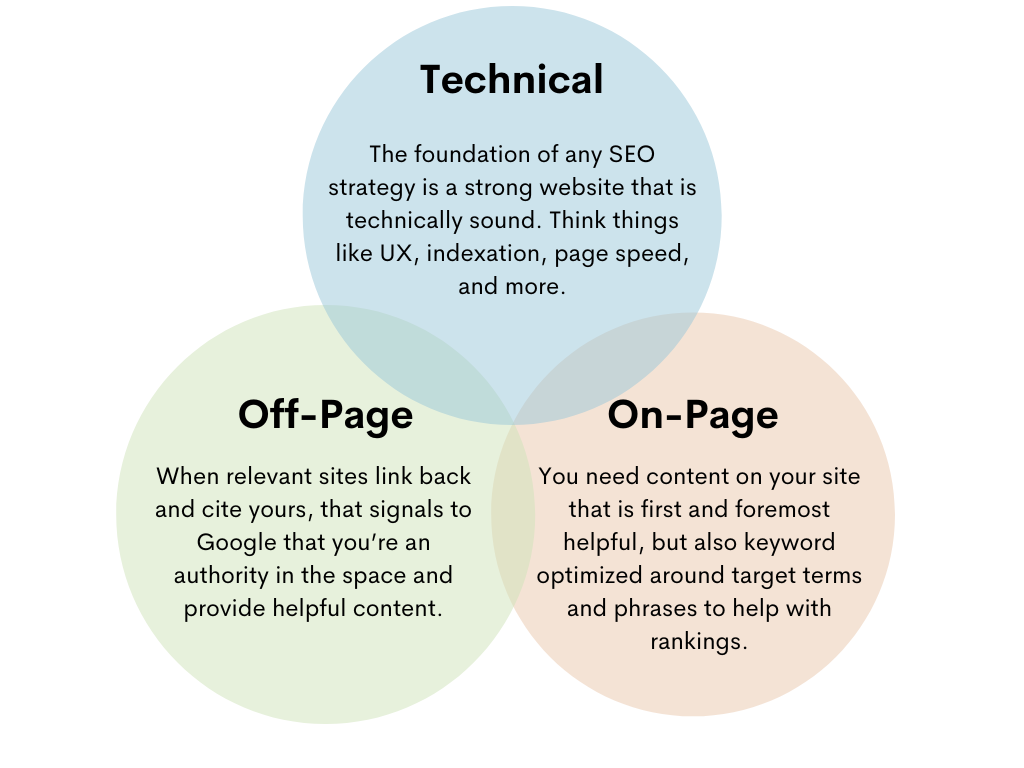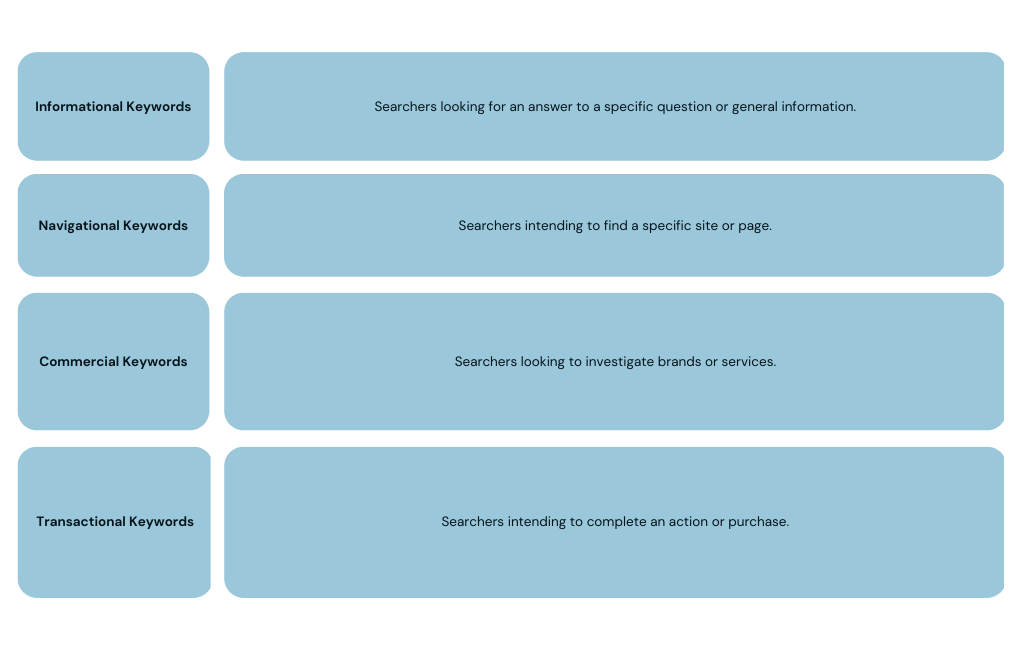Picture this: your product is revolutionary. Your expertise, irreplaceable. Your target market? Hundreds, thousands, or even millions of potential buyers.
And none of them are making it to your website.
Why? Because despite your best intentions, you haven’t included search engine optimization in your marketing plan. You’ve been focused on advertising, email, and referrals. These strategies are great, but they have one thing in common: a limited scope. They only go as far as your ad budget, your email list, your promoters.
If you’re looking for a marketing strategy with unlimited potential to scale, look no further than SEO. Here’s an overview of the most effective techniques to include in your SEO strategy.
Search engine optimization techniques are methodical approaches to improve your visibility in the search engine results page (SERP). How do the experts use SEO techniques in digital marketing? Let’s start by exploring the role SEO plays within your marketing plan.
What’s the importance of search engine optimization in digital marketing? Simply put, SEO helps you get the most value out of your content marketing.
Most organizations create digital content as part of their marketing strategy. Creating thoughtful, high-quality content takes a lot of effort and resources. Imagine pouring blood, sweat, and tears into amazing content… and then not taking steps to make sure your audience sees it. Your career as a content creator won’t last long.
SEO is one of the most effective ways to get eyes on your content over time. Sure, you can run ads to send traffic to your content. But organic traffic is typically considered more valuable because of its higher conversion rates.
Plus, when you turn your ad campaigns off, that paid traffic stops flowing. In contrast, an investment in building up SEO traffic is forever. (Okay, maybe not “dystopian future” forever. But it’ll provide value for a long time.)
We often divide search engine optimization techniques into three main categories: technical, on-page (content), and off-page (backlinks). Developing all three categories helps make sure your strategy is well rounded. Here are some SEO techniques and tools to help you build your plan.

A solid SEO foundation starts with technical SEO. Why is technical SEO so important? Search engines seek to promote websites that provide a good experience. There are some technical elements that, to algorithms, are “table stakes” for a good user experience.
Here are some of the most important technical factors and how to optimize them.
Next up: on-page SEO. Creating content that meets quality standards and focuses on a strategic keyword is no easy task. Here are some steps to follow.
All content techniques are not created equal. There are good and bad tactics. Let’s explain, in short, a “white hat” technique. Creating content that’s helpful to readers is considered white hat. There’s no ulterior motive. You’re genuinely setting out to rank the highest by creating the best content.
Now to explain, in short, a “black hat” technique. Usually, if your intention is anything other than being helpful, you’re probably leaning toward black hat. Techniques like keyword stuffing, sneaky redirects, and buying links are becoming outdated as search engine algorithms learn to sniff them out.
Now that your website meets technical standards and you’ve published excellent content, your next step is to earn backlinks. What are backlinks? They’re simply links to your content from external websites.
Follow these steps to get backlinks to your content:
There are five main factors to consider as you’re building and executing your SEO strategy.
Search engine algorithms grow more sophisticated every year. At the same time, the bar for engaging user experiences is higher than ever. Think virtual tours, live streams, and augmented reality.
If your website’s technical infrastructure is lacking, Google simply won’t consider ranking your content. There’s too much competition providing a better experience.
We talked about keyword research, but what about search intent? Consider the different types of SEO keywords your audience might use. Determining whether each keyword is informational, navigational, commercial, or transactional will reveal the searcher’s intent.

Matching your content to search intent is crucial for delivering a good experience. Think of it this way. If you’re searching for “where to buy running shoes” (a transactional keyword), you probably don’t want to read a 2,000-word article about the histories of the top athletic retailers. You want a clearly-structured list of places to shop highlighting the pros, cons, and price points of each.
Interlinking the content on your website helps search engines understand the structure of your website. It also keeps organic traffic on your site longer by helping them discover content related to what they’re currently reading.
For example, let’s say you mention a concept in one piece of content, and go into detail on that concept in another piece. Someone reading the first piece won’t know that additional information’s available unless you link to the second piece.
Backlinks are important because search engines assume that if lots of third parties link to your content, it must be good. Basically, it’s like Google is reading the reviews for your content before deciding to rank it.
Bottom line: The most important thing is to make your content helpful to your reader - and that goes beyond using a keyword in your content here and there. Your content should offer new insights, original research, and fresh perspectives.
Now that we’ve explained search engine optimization techniques and strategies used to rank your website, let’s talk about how paid tactics fit in. We’ll also look at an example of how all these strategies fit together.
SEO refers to the process of optimizing your content to rank higher. It’s an organic tactic - meaning the only investment is the time it takes. Search engine marketing is the opposite side of the same coin. It refers to paying for an ad placement at the top of the SERP.
Both SEO and SEM can help you achieve your content marketing goals. They can complement each other. Here’s an example.
Let’s say you’re an online retailer specializing in running shoes. Your organic SEO goals will typically fall near the top of your marketing funnel. You might use SEO to gain organic traffic searching for informational keywords like “how to choose a running shoe.” This will help you establish your brand as an authority. If your audience finds your content helpful, they’ll think of you when they’re ready to buy.
To win traffic searching for transactional keywords like “buy XYZ brand running shoes,” you’d likely be more aggressive. Those users are more likely to bring immediate value to your company by making a purchase.
However, the line between when to use SEO and SEM easily blurs. Many brands use SEM to pay for top-funnel traffic if they know those users will be profitable down the line. For example, a user searching “best running shoes under $500” is still in the research phase. But they’ve indicated they’re willing to spend a lot on shoes. Even though they’re not ready to buy, it might be worth it to pay for their eyeballs on your content.
Here’s another example. Maybe your blog has a high-converting pop-up that invites readers to get email notifications when their favorite shoe brands go on sale. Since a user on any piece of content could convert, it might make sense to pay for search traffic, even on informational keywords.
Marketers sometimes hesitate to invest in SEO because they may not see an immediate ROI. While SEO won’t get you instant traffic like ads, it’s a worthwhile pursuit that will benefit your company for years to come.
And once your content starts gaining traction, your results will snowball. As your site starts ranking higher in the SERP, you’ll earn more backlinks. You’ll look more credible and authoritative to Google. And suddenly, your organic traffic will skyrocket.
The problem is, to get these results, you have to start somewhere. As the (modified) proverb goes: The best time to start SEO was 20 years ago. The second-best time is now.
By using the techniques and tactics we’ve covered, you can start creating optimized, high-quality content that will build evergreen value for your brand.